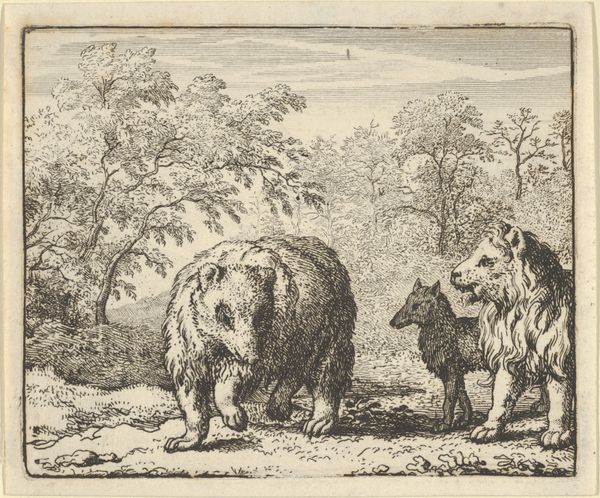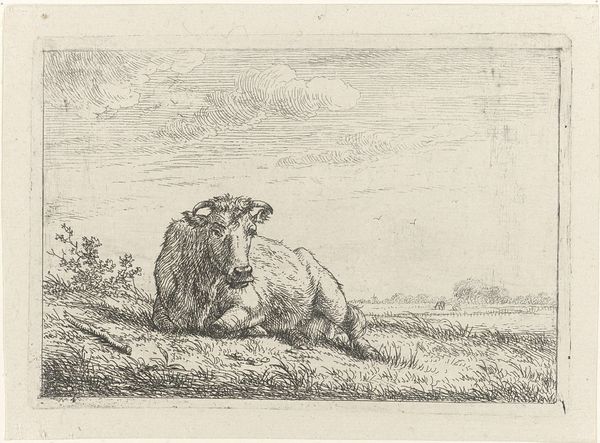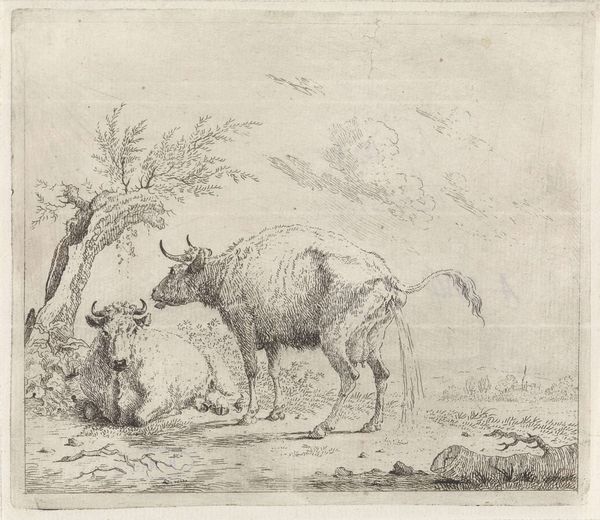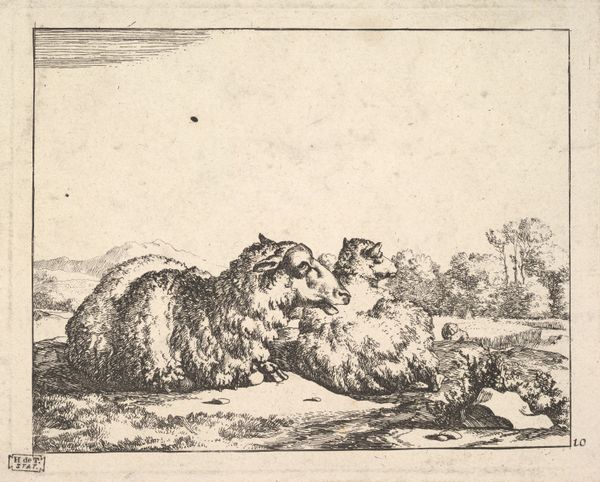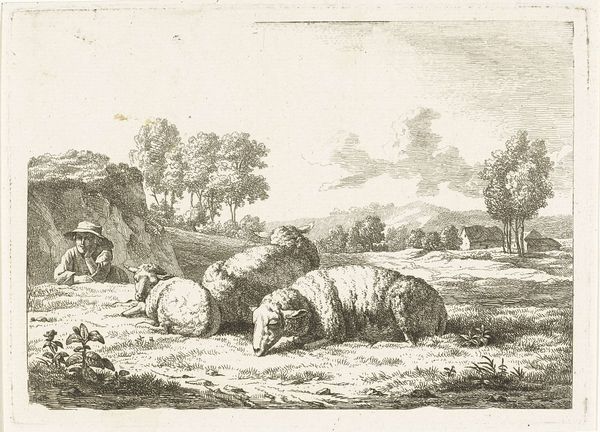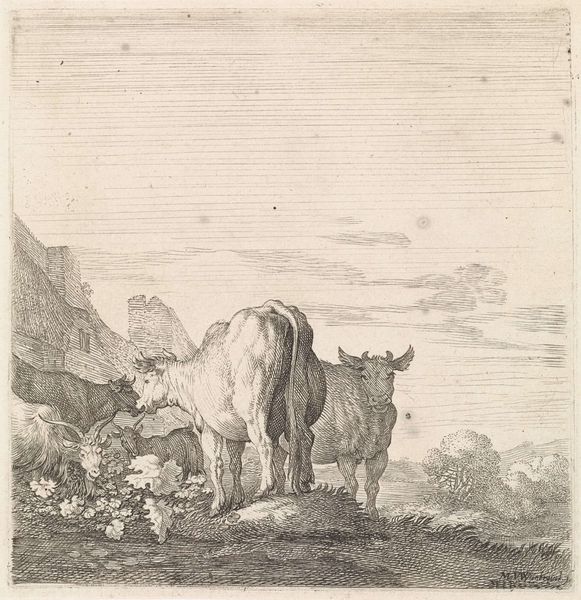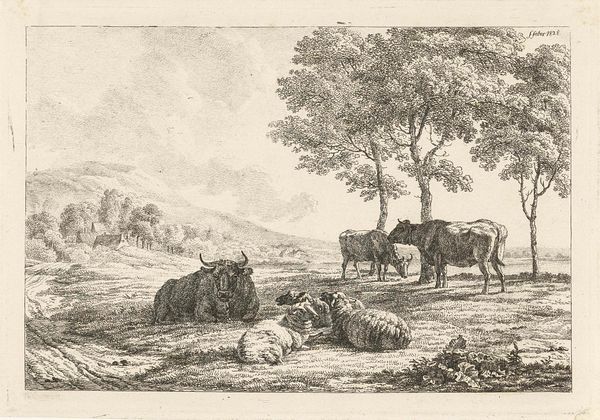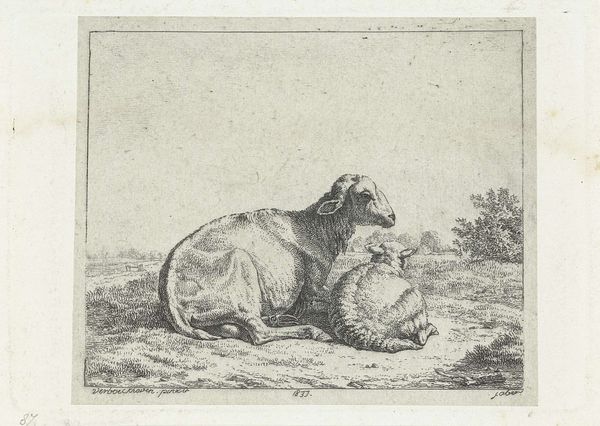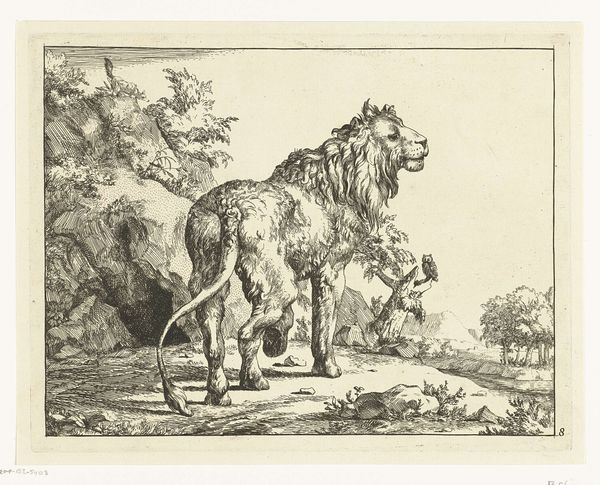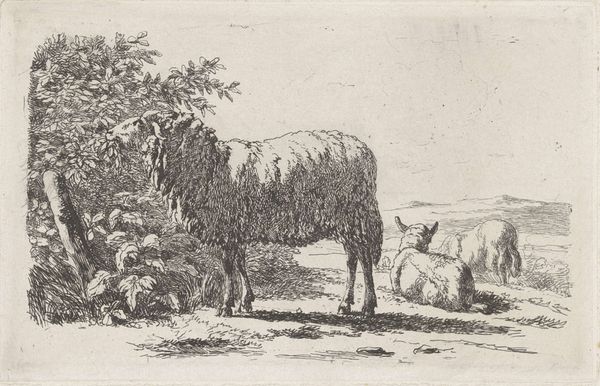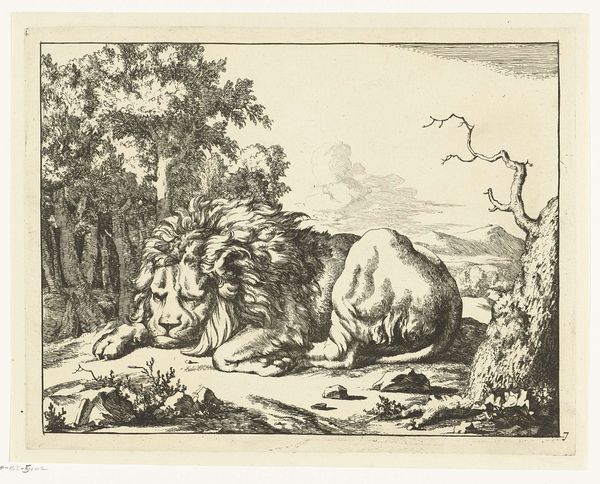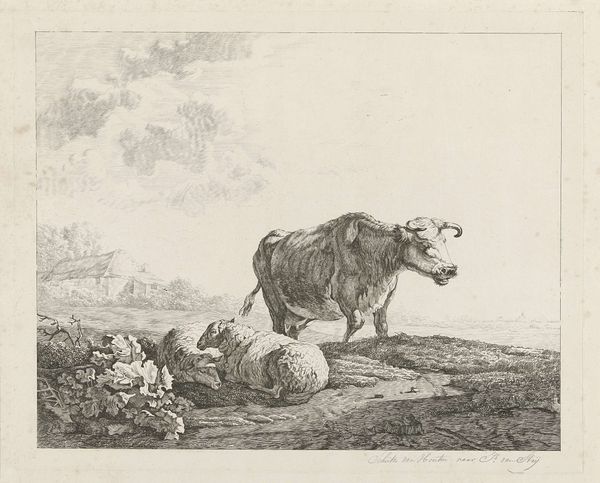
Landschap met twee liggende en een staand schaap 1817 - 1828
0:00
0:00
drawing, paper, ink
#
landscape illustration sketch
#
drawing
#
animal
#
pen illustration
#
pen sketch
#
pencil sketch
#
landscape
#
paper
#
ink
#
ink drawing experimentation
#
geometric
#
pen-ink sketch
#
line
#
pen work
#
sketchbook drawing
#
academic-art
#
fantasy sketch
#
realism
#
initial sketch
Dimensions: height 141 mm, width 196 mm
Copyright: Rijks Museum: Open Domain
Frédéric Théodore Faber created this landscape with sheep using etching, a printmaking technique. Faber was working in the Netherlands around the turn of the nineteenth century, a time when the Dutch art market was changing. Before this time, Dutch art was dominated by genre painting, portraiture, and still life, designed to represent the values of the urban merchant class. But as art became more of a public concern, landscape art grew in popularity. The Dutch countryside, in particular, came to be associated with ideas of nationhood. Here, we see sheep grazing in a pasture, a romantic, idealized version of Dutch rural life. The etching medium allowed for wide distribution of these images to a growing market. By looking at the artist's other landscapes and prints, as well as publications from the period, we can gain a deeper understanding of the image’s cultural significance. After all, art always reflects the social and institutional contexts in which it’s made.
Comments
No comments
Be the first to comment and join the conversation on the ultimate creative platform.

